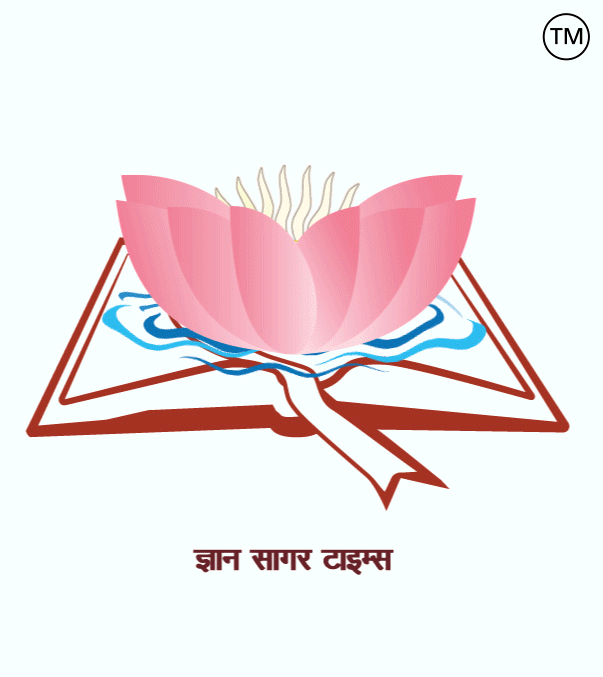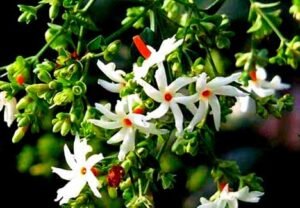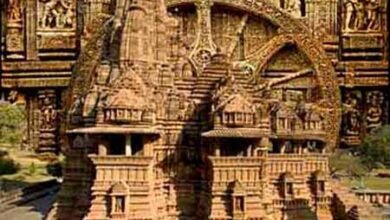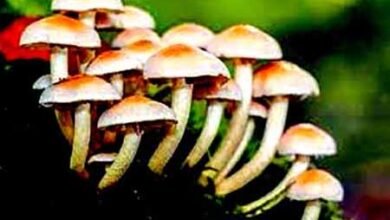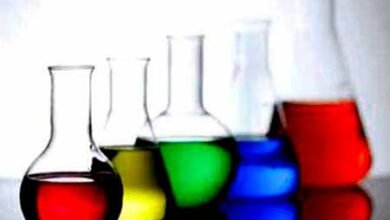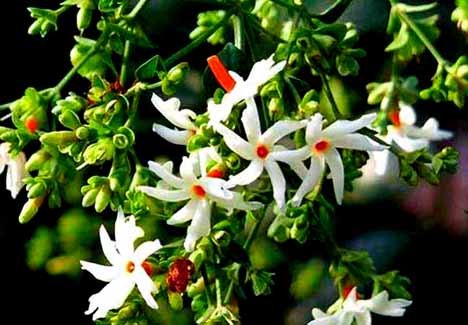
Related to botany -190.
|
1. What is called the principle of selection of nature? = Darwin. 2. The origin of new species due to the change of genes from old species is called? = Neo Darwinism. 3. The world’s largest plant, whose height is 90 meters and diameter is 13 meters, its named? = Sequoiadendron giganteum (Giant sequoia). 4. The first systematic attempt was made to classify organisms.? = Hippocrates and Aristotle. 5. The plants in which flowers are formed are called? = Flowering Plants / Angiosperms. 6. The process that takes place in plants by the stomata located on the lower surface of the leaves is called? = Transpiration. 7. The technique of growing plants without using soil is called? = Hydroponics. 8. Ginger is a stem, not a root, because it has? = Inter node & Nodes. 9. The leaves of the Mimosa plant wither on touching because? = The turgor pressure of the leaf base is changed. 10. Which colour rays of sunlight are most absorbed by chlorophyll during the process of photosynthesis? = Blue and Red. 11. Photosynthesis also occurs in some bacteria because it is found in? = Chlorophyll. 12. If a dicot root is cut in an oblique direction, then whatever parts are found in its internal structure from outside to inside are the parts found inside? = Epidermis, cortex, Pericycle and vascular bundles. 13. Which is called the kitchen of the plant cell? = Chloroplast. 14. What is called a Leucoplast? = It is a colourless plastid which is found in the cells of those parts of the plant which are away from sunlight, such as: – Roots, underground stems. 15. What are Chromoplasts? = It is colored plastids which are usually red, yellow and orange in colour. These are found in the colored parts of the plant, like flowers, etc. E.g., – Lycopene in tomato, carotene in carrot, Betanine in beet roots. 16. Chloroplast is found only in plants? = Photosynthetic green plants. 17. Transport of water in plants takes place by? = Xylem and conducting tissue. 18. Whose presence in plants, the process of growth to continue continuously throughout their life? = Meristem Tissue. 19. What is the main function of phloem tissue? = Distribute the food produced in the green part of the plants to other parts. 20. Algae are often? = Chlorotic, without Vascular Tissue and Autotrophic. 21. The root is the descending part of plants that develops from? = Radical. 22. Water enters the leaf cells through osmosis, and carbon dioxide from the atmosphere? = Diffusion. 23. What is the flower producing hormone? = Florigen. 24. Gymnosperm plants are naked-seeded, and hence they do not bear? = Fruits. 25. The members of Phaeophyceae are commonly known as? = Brown algae. 26. The members of Rhodophyceae are commonly called? = Red algae. 27. The female reproductive whorl of a flower is called? = Gynoecium. 28. What is the male reproductive whorl is called? = Androecium. 29. There is an exception to Mendel’s laws? = Linkage. 30. Which part of the Pitcher plant is converted into a pitcher? = Lamina of the leaf. 31. Which metal is present in chlorophyll? = Magnesium. 32. How many parts does a flower have? = 4 whorls as Calyx, Corolla, Androecium and Gynoecium. 33. What are Root Hairs? = The hairs that are visible on the surface of the roots of trees are called root hairs. 34. The vegetation that grows in the desert area is called? = Xerophytes. 35. The vegetation of high-humidity areas or marshy areas is called? = Hygrophyte. 36. The leaves of monocot plants are? = Narrows are Isobilateral and parallel-veined. 37. The leaves of dicot plants are? = Wide dorsiventral and reticulate veined. 38. What is the smallest seed? = Orchids. 39. The largest leaf is found in? = Victoria regia. 40. The first photosynthetic organism to be formed on Earth is? = Cyanobacteria or Blue-green algae (BGA).
Dr. (Pro.) Amrendra Kumar. ========== ========= =========== वनस्पति विज्ञान से संबंधित-190. 1. प्रकृति-वरण का सिद्धांत किसे कहते है? = डार्विन. 2. पुरानी जातियों से जीन परिवर्तन के कारण नयी जातियों की उत्पत्ति को कहते हैं? = नव डार्विन वाद. 3. विश्व का सबसे बड़ा पौधा जिसकी ऊंचाई 90 मीटर तथा व्यास 13 मीटर है उसका नाम? = सिक्वोएडेंड्रोन गीगानटम. 4. जीवों के वर्गीकरण का सबसे पहले व्यवस्थित प्रयास किया था? = हिप्पोक्रेट्स एवं अरस्तू. 5. जिन पौधों में पुष्प बनते हैं, उन्हें? = पुष्पीय पादप कहते हैं. 6. पत्तियों की निचली सतह स्थित रन्ध्रों द्वारा पौधो में सम्पन्न होने वाली क्रिया को कहते है? = वाष्पोत्सर्जन. 7. पौधो को बिना मिट्टी का उपयोग किये विकसित करने की तकनीक को कहते हैं? = हाइड्रोपोनिक्स. 8. अदरक एक तना है जड़ नही, क्योंकि इसमें? = पर्व व पर्वसन्धियाँ. 9. स्पर्श करने पर छुईमुई पौधे की पत्तियाँ मुरझा जाती हैं क्योकि? = पर्णाधार का स्फीति दाब बदल जाता है. 10. प्रकाश संश्लेषण प्रक्रिया के दौरान क्लोरोफिल द्वारा सूर्य प्रकाश की किस रंग की किरणों का सर्वाधिक अवशोषण होता है? = नीले और लाल. 11. कुछ बैक्टीरियाओं में भी प्रकाश संस्लेषण होता है चूँकि इनमे पाया जाता है? = क्लोरोफिल. 12. यदि किसी द्विबीजपत्री जड को तिरछी दिशा में काटे , तो उसकी आन्तरिक संरचना में बाहर से अन्दर की ओर जो भी भाग पाये जाते है अन्दर की ओर पाये जाने वाले भाग होते हैं? = इपिडर्मिस, कार्टेक्स, पेरीसाइकिल और वैस्कुलर बंडल. 13. किसे पादप कोशिका की रसोई कहते हैं ? = हरित लवक. 14. अवर्णी लवक किसे कहते है? = एक रंगहीन लवक है जो पौधै के उन भागों की कोशिकाओं में पाया जाता है जो सूर्य के प्रकाश से दूर होते हैं जैसे:- जडों, भूमिगत तनों. 15. वर्णी लवक किसे कहते है? = यह रंगीन लवक होता है जो प्राय: लाल, पीले एवं नारंगी रंग के होते हैं. ये पौधै के रंगीन भाग जैसे पुष्प आदि में पाये जाते हैं. जैसे: – टमाटर मे लाइकोपेन, गाजर मे कैरोटीन, चुकंदर मे विटानीन. 16. क्लोरोप्लास्ट लवक केवल पौधों में पाया जाता है? = प्रकाश संश्लेषी पौधों. 17. पौधों मे जल का परिवहन द्वारा होता है? = जाइलम या दारू ऊतक. 18. पादपों मे किसकी उपस्थिति के कारण ही वृद्धि की क्रिया निरंतर उनके जीवन भर होती रहती है? = विभाज्योतक ऊतक. 19. फ्लोएम ऊतक का प्रमुख कार्य होता है? = पौधों के हरे भाग मे निर्मित भोज्य पदार्थ को दूसरे भागों मे वितरण करना. 20. शैवाल प्राय: होते हैं? = पर्णहरित युक्त, संवहन ऊतक रहित और आत्मपोषी. 21. जड़ पौधों का अवरोही भाग है जो विकसित होता है? = मूलांकुर. 22. पत्ती की कोशिकाओं मे जल शिरा से परासरण द्वारा एवं कार्बन डाई आक्साइड वायु मण्डल से द्वारा जाता है? = विसरण. 23. फूल खिलाने वाला हार्मोन को कहते हैं? = फ्लोरिजेंस. 24. जिम्नोस्पर्म के पौधे नग्नबीजी होते हैं, इनमें क्या नहीं होते हैं? = फल नहीं होते हैं. 25. फियोफायसी के सदस्य सामान्यतः के नाम से जाने जाते हैं? = भूरे शैवाल. 26. रोडोफाइसी के सदस्यों को सामान्यतः कहा जाता है? = लाल शैवाल. 27. पुष्प के मादा जननांग को कहते हैं? = जायांग. 28. नर जननांग को कहा जाता है? = पुंकेसर. 29. मेण्डल के नियमों का एक अपवाद है? = सहलग्नता. 30. घटपर्णी का कौन सा एक घट में रूपान्तरित होता है? = पत्ती के पर्ण फलक. 31. क्लोरोफिल ( हरित लवक) में कौन सी धातु होती है? = मैग्नीशियम. 32. फूल के कितने भाग होते हैं? = दल, वाहय दल, पुंकेसर और स्त्रीकेसर. 33. मूलरोम किसे कहते हैं? = पेड़ों की जड़ों की सतह पर जो रोएँ से दिखाई देते है उन्हें मूलरोम कहते हैं. 34. मरूस्थलीय क्षेत्र में उगने वाली वनस्पतियों को कहते हैं? = जीरोफाइट. 35. अधिक आर्द्रता वाले क्षेत्रों या दलदली क्षेत्र की वनस्पतियां को कहते हैं? = हाइग्रोफाइट. 36. एकबीजपत्री पौधों की पत्तियां होती हैं? = संकरी, आइसोबाईलेटरल एवं समानांतर नाड़ी विन्यास. 37. द्विबीजपत्री पौधो की पत्तियां होती हैं? = चौड़ी, डॉर्सिवेंट्रल एवं जलिकावत नाड़ी विन्यास. 38. सबसे छोटे बीज होता है? = आर्किड्स. 39. सबसे बड़ी पत्ती होती है? = विक्टोरिया रेजिया. 40. पृथ्वी पर बनने वाले प्रथम प्रकाश संश्लेज़ी जीव है? = नील हरित शैवाल (सायनो- बैक्टीरिया).
डॉ. ( प्रो. ) अमरेंद्र कुमार.
|

